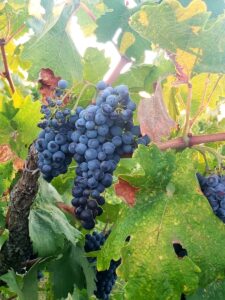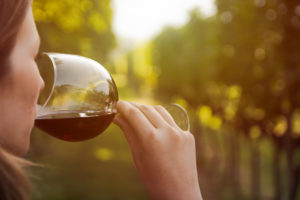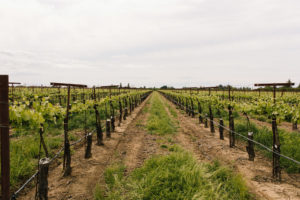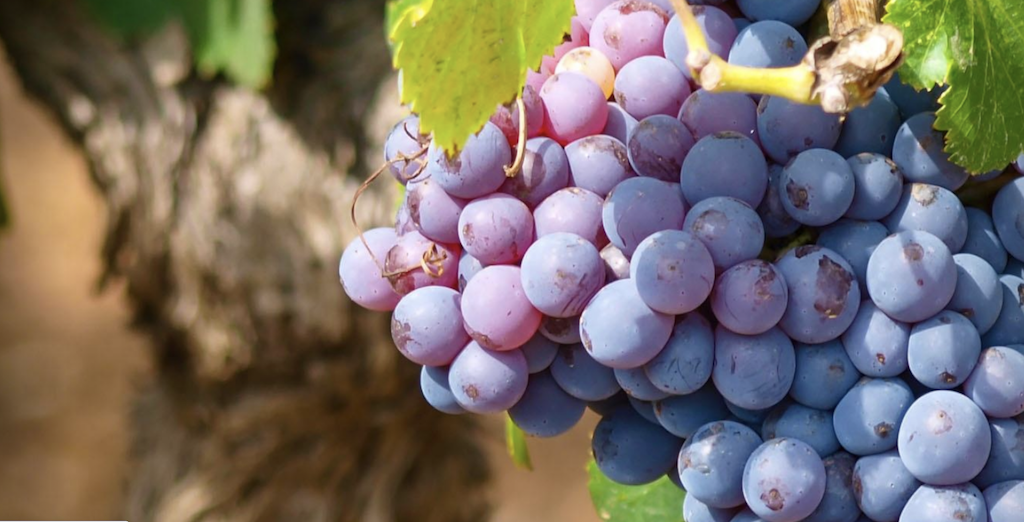AUGUST 2023
Zinfandel
Gerald Boyd On Wine

In the early 1970s, when I was trying to get my head around wine, Zinfandel was the first California red wine that got my full attention. Burgundy was my first love, but when I tasted my first Zin, a whole new taste experience opened up.
Ridge Vineyards was making elegant Zins then, but the wines were budget busters, so I looked at more affordable Zins from Shenandoah Vineyards in Amador, Storybook Mountain and Sutter Home in Napa, Parducci in Mendocino and the eccentric Monterey Peninsula Winery, producers of a Zinfandel they touted with a back label (or was it an innovative side label?) that suggested the Zin was a good choice with a Zen macrobiotic casserole!
Those were heady days for California wine and for me. A Napa Valley Cabernet Sauvignon had bested the field in the famous 1976 Paris tasting and the respected television news magazine “60 Minutes” ran a story about the “French Paradox,” with bon vivant correspondent, Morley Safer, announcing to the world that wine was good for your health.
Those two events catapulted California wine to new heights and gave me an appreciation for Cabernet Sauvignon. But the new craze for California Cabernet moved Zinfandel down my list of red wine favorites…at least for a while.

Of course, the rise of Cabernet meant that all red wine would, henceforth, be measured by Cabernet Sauvignon. And for many American wine drinkers, like me, that included the all-American red wine, Zinfandel.
Fans of Cabernet Sauvignon are content with its angular structure, harder tannin and shy fruit flavors. Cabernet is a hard wine to like when young and collectors are used to waiting for their wine to take years to come around.
Zinfandel has no such drawbacks. A young Zin is all about loads of ripe, almost jammy, blackberry flavors, supported by good acidity, albeit hiding behind the fruit. And, yes, high alcohol, a red flag of sorts that bothers Zin critics, but is excused by Zin fans as it is what it is. In other words, love the Zinfandel, love (or at least tolerate) the alcohol.
Today, Zinfandel producers work to keep the percentage of alcohol down to an acceptable 13%-14% level, although they are quick to remind consumers that the nature of Zinfandel tends to higher alcohol. When alcohol levels began to creep up, a number of reasons, such as changing vineyard practices, use of new clones and, of course, climate change, were given.
Zinfandel by the Numbers
The very active Zinfandel Advocates & Producers (ZAP) has a useful web site (zinfandel.org) packed with everything you need to know about Zinfandel, including the 11 regions in California where Zinfandel is grown and produced. And there’s a section on old vines and Legendary Vineyards, like Lytton Springs, plus a directory of the hundreds of Zinfandel producers, including Felline, a Primitivo maker in Puglia, Italy.
Primitivo Connection
One of the most enduring stories about Zinfandel is where it comes from. The tale is circuitous, moving around eastern Europe and the Mediterranean basin.
The short account claims there is evidence of the presence of the Zinfandel grape in 6000 BC in the Caucasus mountains. From there, the journey moves to Croatia, then the Puglia region of southern Italy were researchers found the Primitivo grape to be genetically identical to Zinfandel.
Further, records show that Zinfandel likely entered the United States through a nursery on Long Island, New York. The NY nursery imported grape cuttings, including one labeled “Zinfendal,” from a nursery in Austria which probably got the grapes from Croatia.

Looking for Zinfandel
California leads the world in Zin plantings and production. Where else is Zin grown? My son the winemaker does not count Zinfandel among his favorite red wines. But then, he makes wine in Washington state and there isn’t much Zin in the Evergreen state. There are small amounts of Zin in about a dozen other states, including Colorado, Texas, Ohio and Arizona.
Worldwide, Zinfandel can be found in Mexico, Chile, Brazil, South Africa and Western Australia, where Cape Mentelle makes a big, rich Zin, that can at times, taste like Zinfandel, while at other times, tastes more like a big red wine.
Finding Zinfandel from any of these places, except California, may be difficult, but don’t give up, Zinfandel from anywhere is worth the search.
Read the original article HERE
